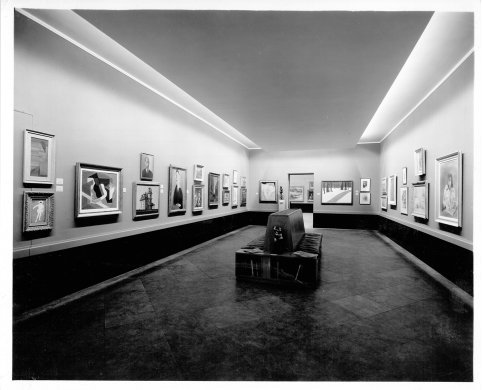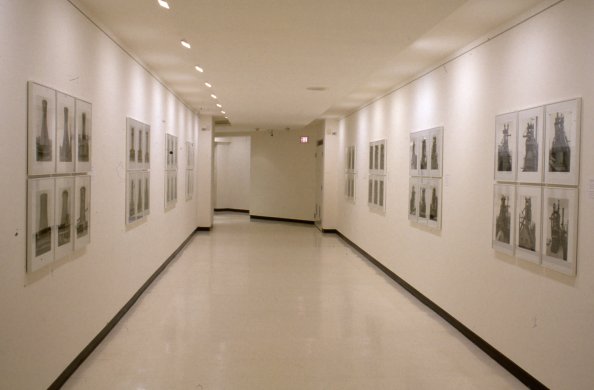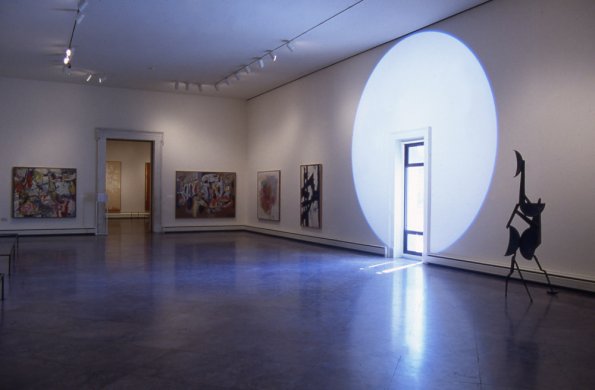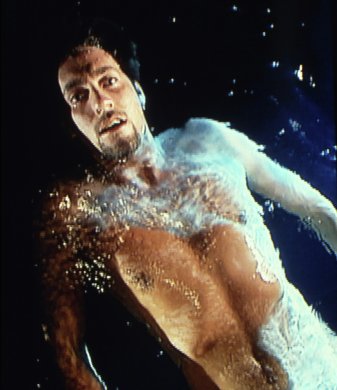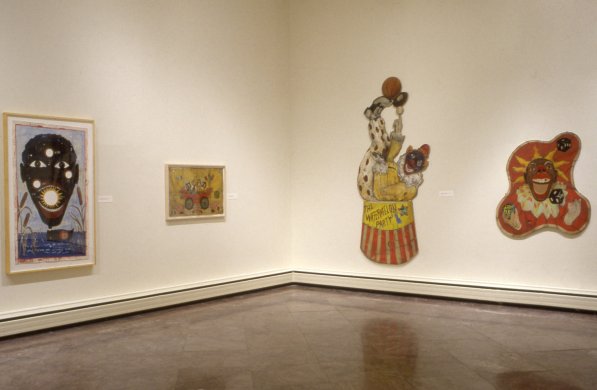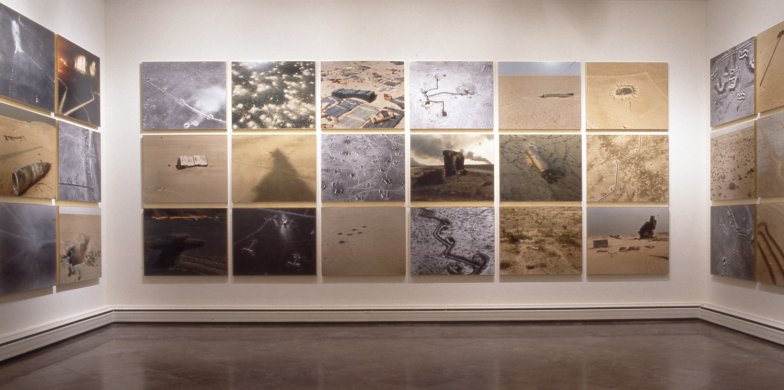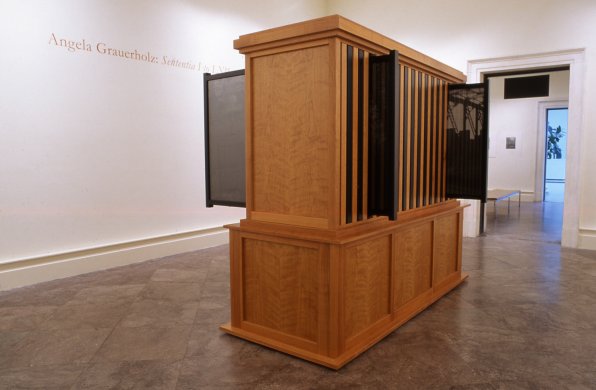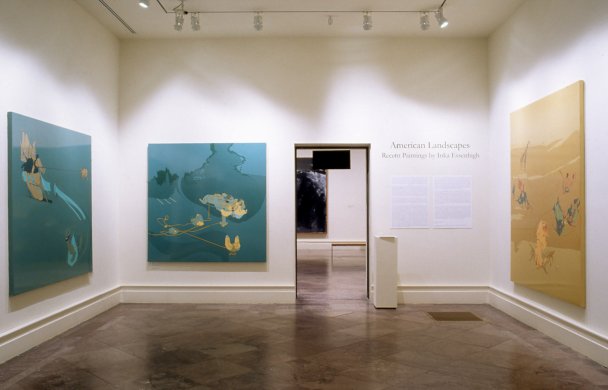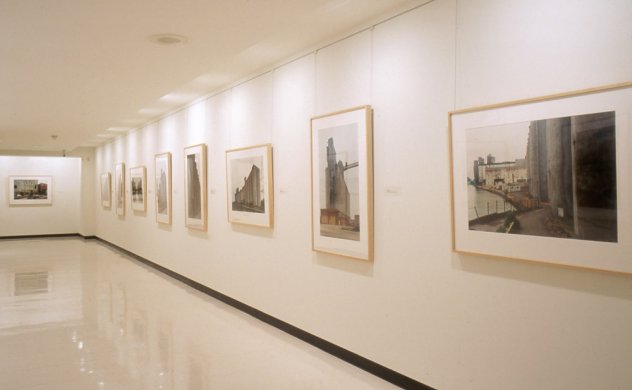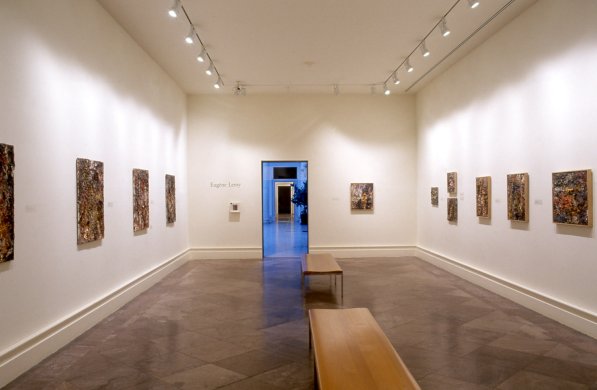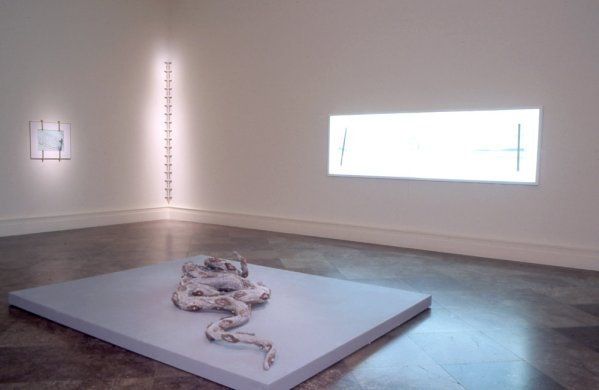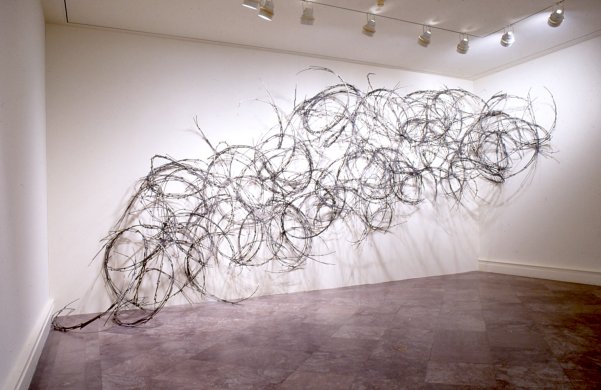New Room of Contemporary Art: Paul Noble
Saturday, February 1, 2003–Sunday, April 13, 2003
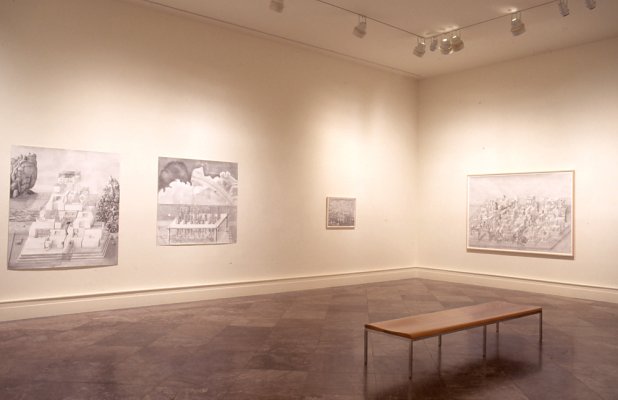
Installation view of New Room of Contemporary Art: Paul Noble. Photograph by Tom Loonan.
1905 Building
Between 1997 and 2003, British artist Paul Noble invented a city. Named for its creator, Nobson Newtown comprises of extremely large and meticulously crafted pencil drawings, each depicting a different building or location within Noble's fictitious industrial town built on the edge of a forest. Although they are precisely rendered in realistic detail, Noble’s creations are much more than a feat in naturalistic representation. They embody the sly wit that characterizes the best of British satire. Each blocky construction is crafted out of a grouping of letters that identifies its owner or function. Each structure is then individually modified to take on the needs of its inhabitants in ways that often render its name unreadable. Representing a utopian vision gone awry, Nobson Newtown is a meditation on city planning, modernism, and life at the turn of the twenty-first century.
This exhibition was organized by Associate Curator Claire Schneider in conjunction with the New Room of Contemporary Art series.
About the New Room of Contemporary Art
The concept of the New Room of Contemporary Art echoes the mission and philosophy of its predecessor, the Room of Contemporary Art. Established in 1939, the Room was envisioned as a both a physical site devoted solely to the continuously rotating presentation of new art within the museum and a means to reinvigorate and reaffirm the museum’s dedication to collecting the art of its time.
It was managed by a special independent committee initially consisting of Buffalo attorney Philip J. Wickser (who helped to conceive the room and who drafted its charter), Seymour H. Knox, Jr., Albright Art Gallery Director Gordon B. Washburn, and artists Charles E. Burchfield and Anna Glenny Dunbar, both of whom called Buffalo home. Through the Room of Contemporary Art fund, the museum acquired Fernand Léger's La fume (Smoke), 1912; Joan Miró's Carnaval d'Arlequin (Carnival of Harlequin), 1924–25; and Henri Matisse's La Musique (Music), 1939, among many others.
Exhibition Sponsors
This exhibition was made possible through the generous support of Art for Arts Sake; Charles E. Balbach; Sheldon and Mary Berlow; Rich Cherry; Gorney Bravin + Lee, New York; Martha and Tom Hyde; Gerald and Sandra Lippes; Maureen Paley Interim Art, London; Marga and Sidney Wallach; and James A. Wooten; with additional support from British Council.
This exhibition was made possible through the generous support of Art for Arts Sake; Charles E. Balbach; Sheldon and Mary Berlow; Rich Cherry; Gorney Bravin + Lee, New York; Martha and Tom Hyde; Gerald and Sandra Lippes; Maureen Paley Interim Art, London; Marga and Sidney Wallach; and James A. Wooten; with additional support from British Council.
